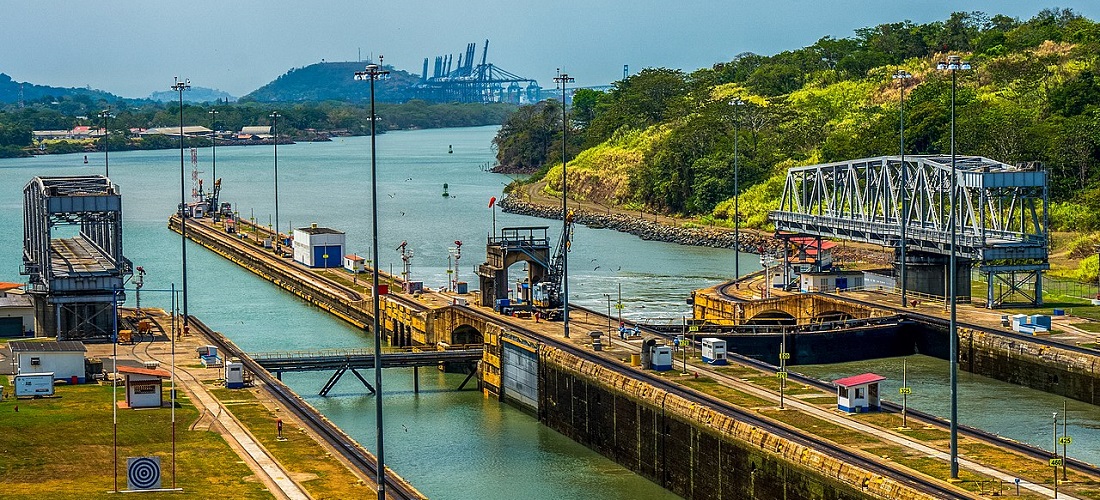
Panama Canal has biggest traffic jam of the seas with over 200 ship backlogs
Aug, 21, 2023 Posted by Gabriel MalheirosWeek 202335
On both sides of the Panama Canal, fleets of ships find themselves immobilized, their voyages delayed by weeks as waterway authorities have slowed traffic to conserve water amid a severe drought.
Data tracking vessel movements reveals a current backlog of over 200 ships awaiting transit, a number that has grown since last month when the canal limited daily crossings to 32, down from the usual 36 under normal conditions.
Both entrances to the canal, on the Pacific and Atlantic oceans, are now speckled with vessels stranded for more than 20 days. These ships, largely bulk carriers or gas carriers, are often chartered on short notice. In an effort to bypass the delays, some carriers are even rerouting their routes.
Tim Hansen, the commercial director for Dorian LPG, which operates a fleet of more than 20 large gas carriers, remarked, “The delays are compounding by the day. Once a decision to proceed is made, there’s no turning back or changing course, and then you’re stuck.”
The canal, consuming three times the water used by New York City on a daily basis, relies on rainfall for replenishment. Insufficient rain has led to a reduction in ship passages, with vessels that do cross paying exorbitant premiums, thus increasing transport expenses for cargo owners, such as U.S. oil and gas exporters and Asian importers.
Ricaurte Vásquez Morales, the canal’s administrator, stated at the end of July that these restrictions could remain in place for the remainder of the year. He also noted that if low rainfall persists through the fourth quarter of this year and the first quarter of the next, the drought could cost the canal around $200 million in revenue for the following year.
Extreme weather conditions, be it excessive rain or drought, are now more frequent compared to the canal’s initial years of operation. This challenge poses a dual role for the Panama Canal Authority, as it also provides water to approximately 2.5 million people, nearly half of Panama’s population.
To combat the effects of the drought, the canal has partnered with the U.S. Army Corps of Engineers, the original builders, allocating $2 billion over the next decade to divert up to four additional rivers into the waterway, supplementing the three that currently feed it.
While the drought has not significantly disrupted container ships, the canal’s primary users in terms of transit, some still find themselves affected. Container ships typically enjoy priority status due to their fixed schedules and advance bookings, yet some have become entangled in this predicament, leading to costs far exceeding the average toll fee.
Lars Oestergaard, A.P. Moller-Maersk’s Head of Customer Deliveries for the Americas, shared, “There were two cases of ships that we couldn’t schedule, and that incurred substantial costs. We ended up participating in an auction, paying an additional $900,000 atop the usual toll fee of $400,000 for each ship to pass through.”
Ordinarily, ships navigate the channel with an average draft of 50 feet, a figure reduced to 44 feet. Consequently, larger ships are constrained to carry fewer containers to accommodate the shallower depth, with smaller vessels enlisted to transport the remaining cargo.
Vessels lacking fixed routes, such as bulk carriers and last-minute chartered gas carriers, are encountering the most pronounced delays. Bulk carriers, which transport commodities like coal and iron ore, also find themselves in suspended operations. Typically owned by medium or small operators, these vessels lack the priority afforded to larger vessels in ports.
-
DW 2020 EN
Mar, 30, 2020
0
DATAMARWEEK 31 MARCH 2020
-
Shipping
Oct, 01, 2020
0
Port sector activity grows 7.9% in Q2 2020
-
Steel and Aluminium
May, 16, 2022
0
Inesfa: exports of scrap metal used in steel manufacturing grew 89% in 2022
-
Ports and Terminals
Dec, 08, 2023
0
Panama Canal Dry Spell Alters Course for Pecém Port Operations

